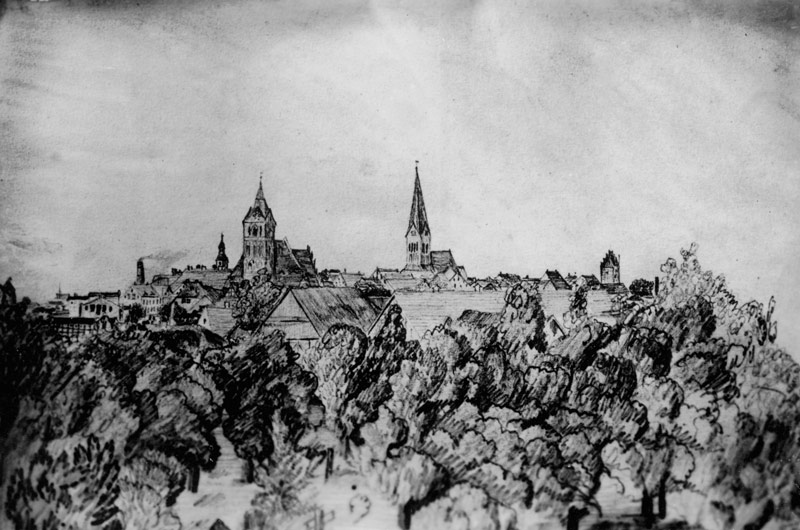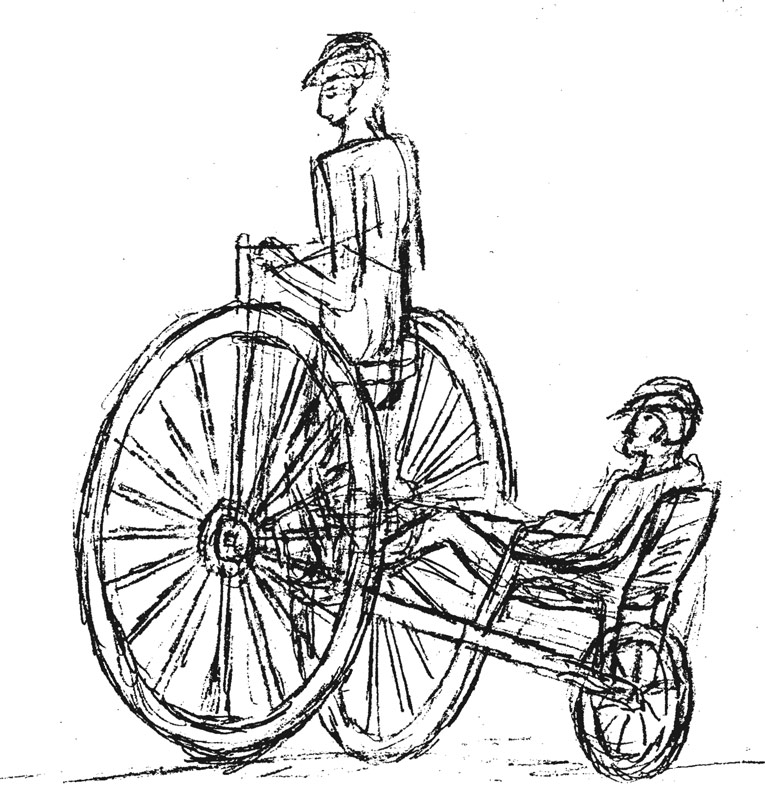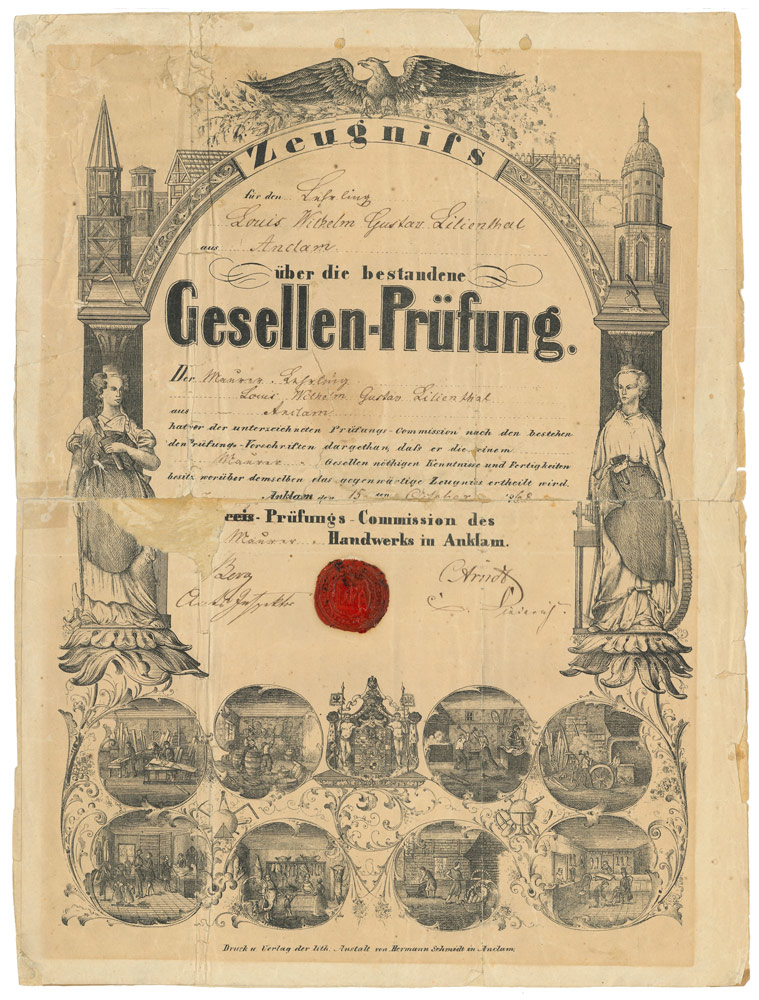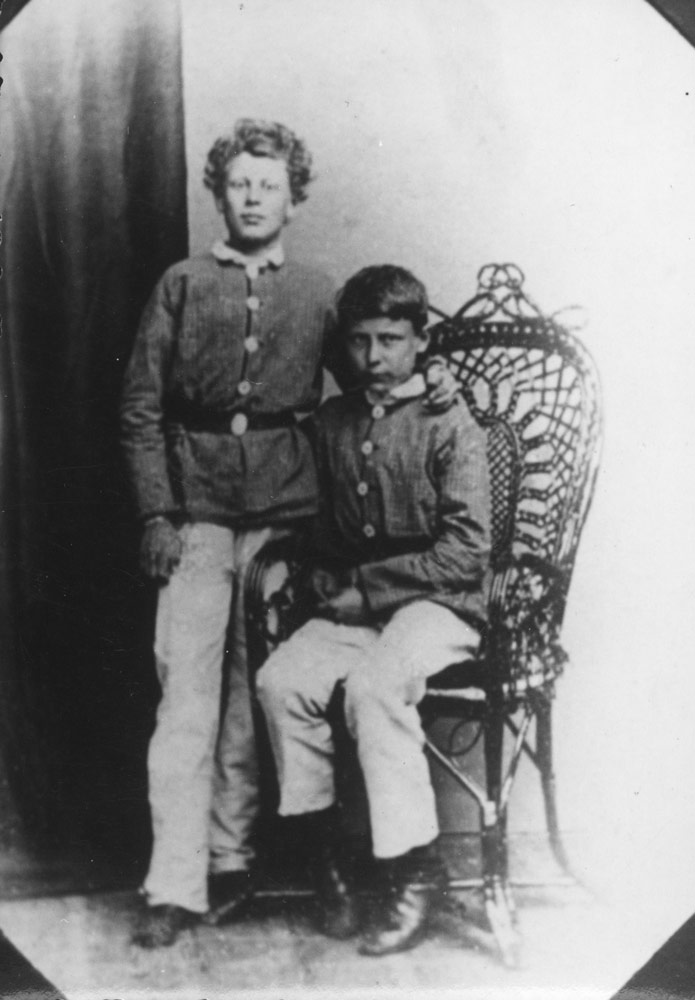
Otto und Gustav Lilienthal
CHILDHOOD IN ANKLAM
If one believes the folklore, an animal fable triggered the Lilienthal brothers' dream of flying. The stork, who explains to a wren how effortlessly he can fly with his outstretched wings, encourages the children to try themselves. They build their own wings from beechwood boards to imitate the birds. Their failures only fuel their ambition more and over the years their studies and designs for "flying machines" become more sophisticated. Curiosity and enthusiasm unite the pair of brothers, who inherited the disposition for dreaming, their artistic talent, and an interest in technology from their parents.
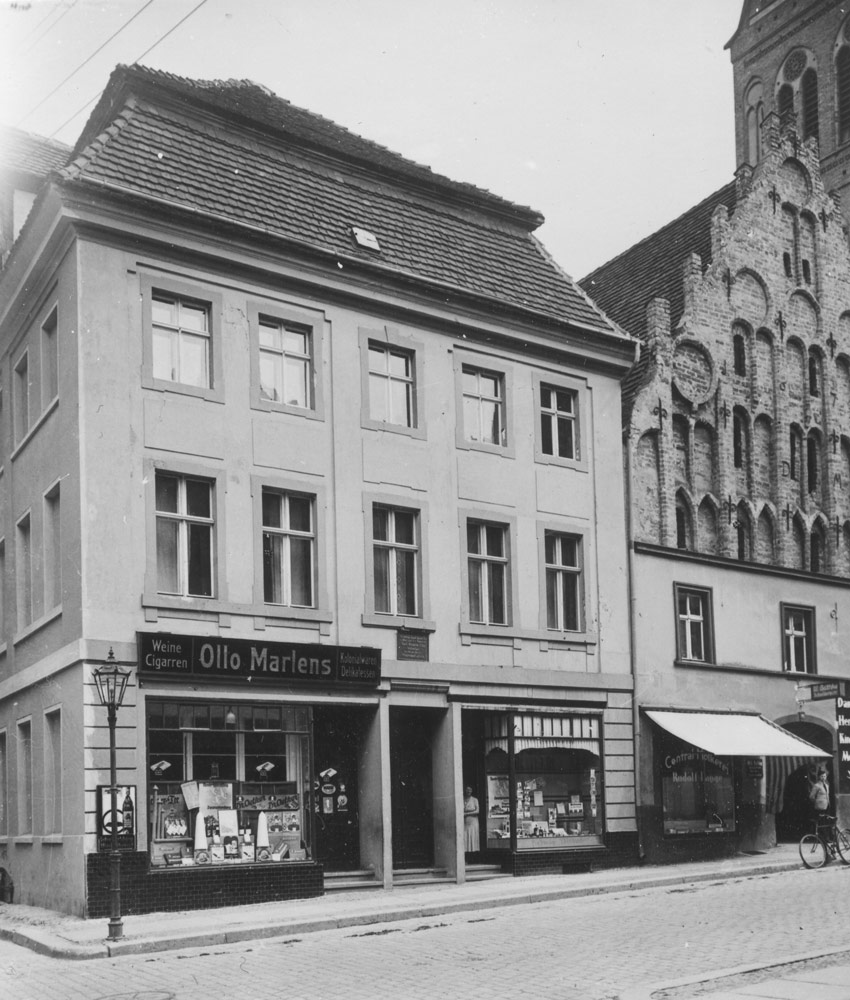
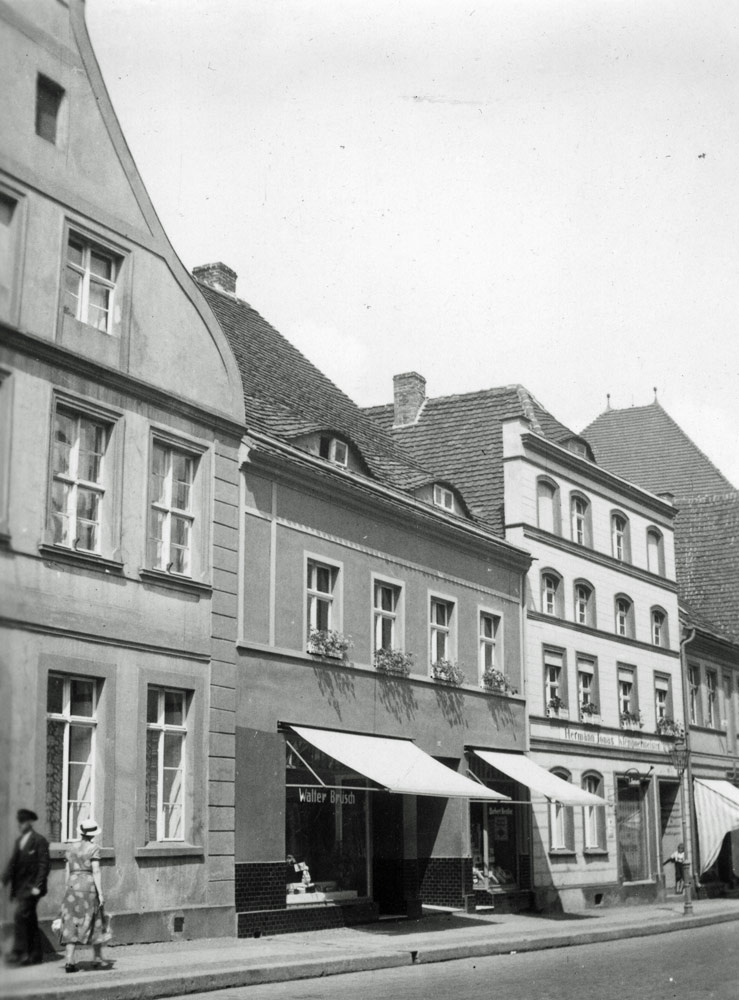
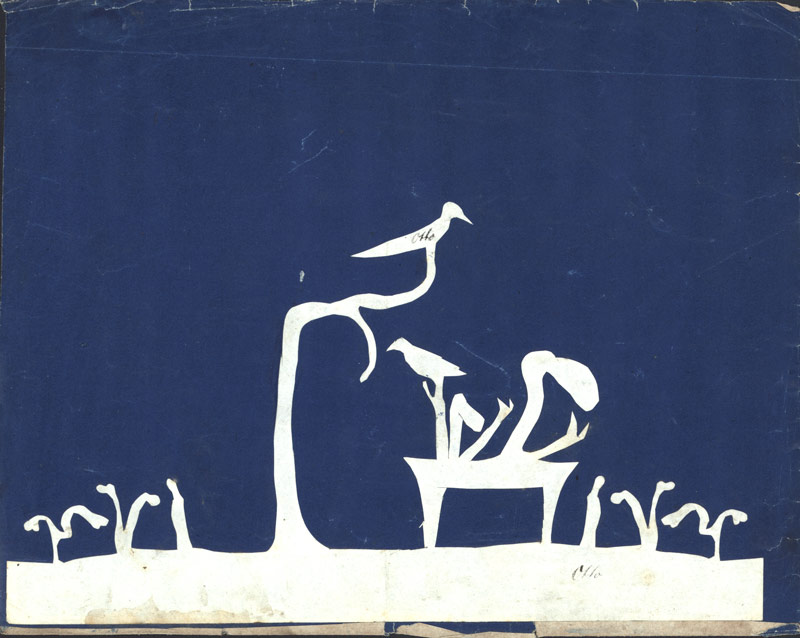
At school, Otto and Gustav Lilienthal follow their affinities, but do not perform well in the eyes of their teachers. Otto only stands out in the Arts and Mathematics. Initially, it is Otto who is considered to be the "artist" in the Lilienthal family, but over time the relationship is reversed. Gustav develops his artistic abilities, while Otto pursues his passion for technology. Otto studies mechanical engineering at the Berlin Business Academy, Gustav follows him and enrols at the Building Academy.
